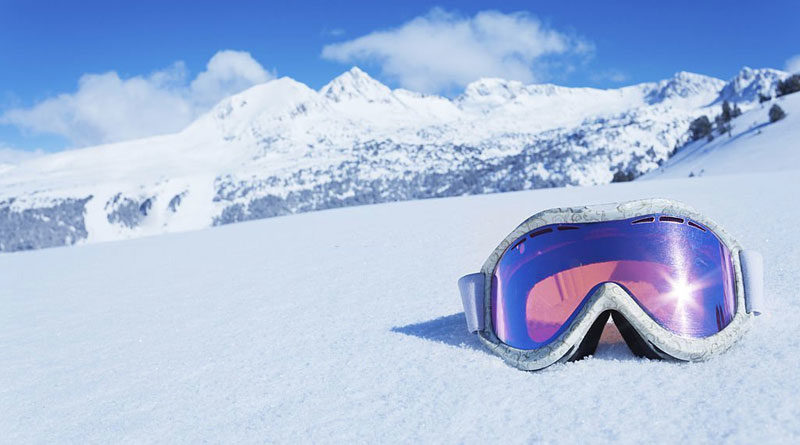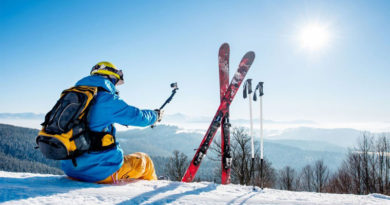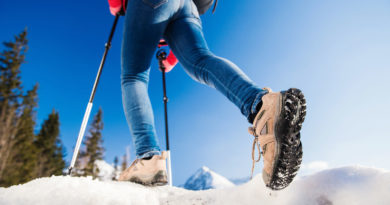Ski vs. Snowboard Goggles: A Comparison
Your eyes need protection in the mountains. The sun is brighter. The thin air at high altitudes filters less UV radiation which is harmful. The snow is a highly reflective surface that causes a lot of stress on your eyes.
Proper eye protection in the mountains requires a good pair of goggles. But a common question arises; is there any difference between ski and snowboard goggles? Some manufacturers market their goggles separately as ski and snowboard goggles. The differentiation confuses people. They start looking for the best value product.
But are there any differences though?
The Purpose of Goggles
The purpose of goggles is to protect your eyes from bright light and debris. During skiing or snowboarding, the role of goggles becomes even more important. At high speeds, your eyes need more protection than standing still or walking.
Any pair of goggles that can provide the protection that your eyes need can work for both skiing and snowboarding. You just need a pair of goggles to cover your eyes. But why do they come with separate labeling?
It’s Just Marketing
The purpose of separate labeling is to capture market share in a particular sport. Back in the 90s, snowboarders were seen as “counter-culture”. Manufacturers weren’t interested in fulfilling snowboarders’ needs.
As with any vacuum in the business world, it gave rise to companies that thrived by catering to the needs of snowboarders. These companies established a reputation for being snowboard-specific. Their reputation gave rise to brand loyalty. That marketing works even today.
The truth is, snowboarding and skiing goggles are the same even when they are labeled as different. When companies label a pair of goggles as snowboard goggles, they prey on the ignorance of people. Smith Range is a good example of snow goggles that work for both skiing and snowboarding.
Think about it, snowboarding is just like skiing. But instead of two planks strapped to your legs, you have a single one sliding on snow going downhill. How different does their gear have to be? Skiing and snowboarding are the same that is why you go to a ski resort to snowboarding. The protection is the same because the same physics are involved.
But time is changing now. With more awareness, brands are ditching the separate labeling. Today, a good pair of goggles is labeled simply as snow goggles. Just pick a good pair for yourself and you are good to go.
What to Look for in Snow Goggles?
The basic purpose of goggles is to protect the eyes. But complications arise after you put a glass layer over your eyes. These complications can limit your vision and can even be dangerous during high speed. Here are the things you should look for when buying goggles for yourself.
Visual Clarity
What’s the point of goggles if you can’t see after putting them on your eyes? Vision clarity is everything when it comes to goggles. Manufacturers employ different techniques in their lenses to provide the best visual clarity possible.
Many manufacturers use optical enhancement technologies to provide better contrast and near-natural colors. The best-known optical enhancement technologies are ChromaPop by Smith, Prizm by Oakley, Sonar by Anon, and Vivid by Giro. Manufacturers also employ different lens shapes to decrease tunnel vision and increase peripheral vision.
Contrast is important as it allows you to differentiate between different objects. With snow everywhere, differentiating between objects becomes a bit hard. At high speeds, it becomes even harder and not to mention dangerous. The same goes for peripheral vision. You have to be aware of the objects in your surroundings.
Some added technologies like photochromic, polarized, and mirror lenses are developed for certain harsh conditions to decrease the strain on your eyes. Snow goggles also have swappable lenses so that you can swap different tints of lenses based on lighting conditions.
Anti-Fogging Capabilities
Fogging is a real issue when you put on a pair of goggles. It happens when the moisture from your body starts to accumulate on the lens. Too much fogging can completely blind you while going downhill which can be dangerous.
Manufacturers employ a few techniques to decrease the issue of fogging. To prevent fogging, a dual-lens setup was introduced in goggles and is now common in almost all lenses. The outer lens remains separate from the inner lens decreasing temperature difference and reducing fog build-up.
Manufacturers have also developed effective ventilation systems in goggles that allow body moisture (around the eyes) to escape, preventing fog build-up. You can see vents at the top, bottom, and sides of the goggle frame.
Moisture-wicking padding is also used along with vents to prevent sweat build-up around the eyes. Lenses are also treated with water-repellent treatments to prevent fog build-up. These treatments require you to handle your lenses with care or they will be wiped off. You can also apply water-repellent coatings by yourself on the inside of the lens.
Helmet Compatibility
Your goggles should be compatible with your snow helmets. Having incompatible helmets and goggles would cause you issues. The helmet and goggles might not fit together. The helmet might block the vents of the goggles.
Most goggles are compatible with most helmets. Yes, ski and snowboard helmets are also the same. But the best way to ensure compatibility is to have goggles and helmets from the same brand. That way, you won’t have to worry about compatibility issues.
Conclusion
The protection equipment for skiing and snowboarding like helmets and goggles are the same. There is nothing different because the same physics are involved. Labeling the same stuff as ski and snowboard-specific is plain silly. But companies do it to develop brand loyalty and increase their market share in one sport. Not all marketing is bad, but don’t believe everything.




